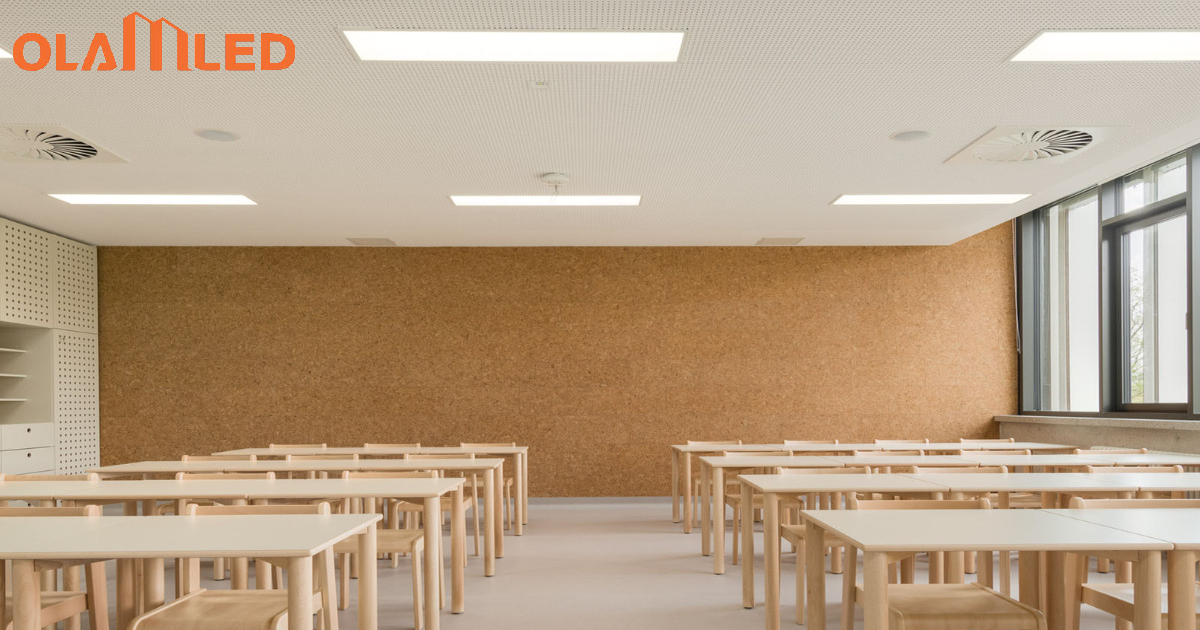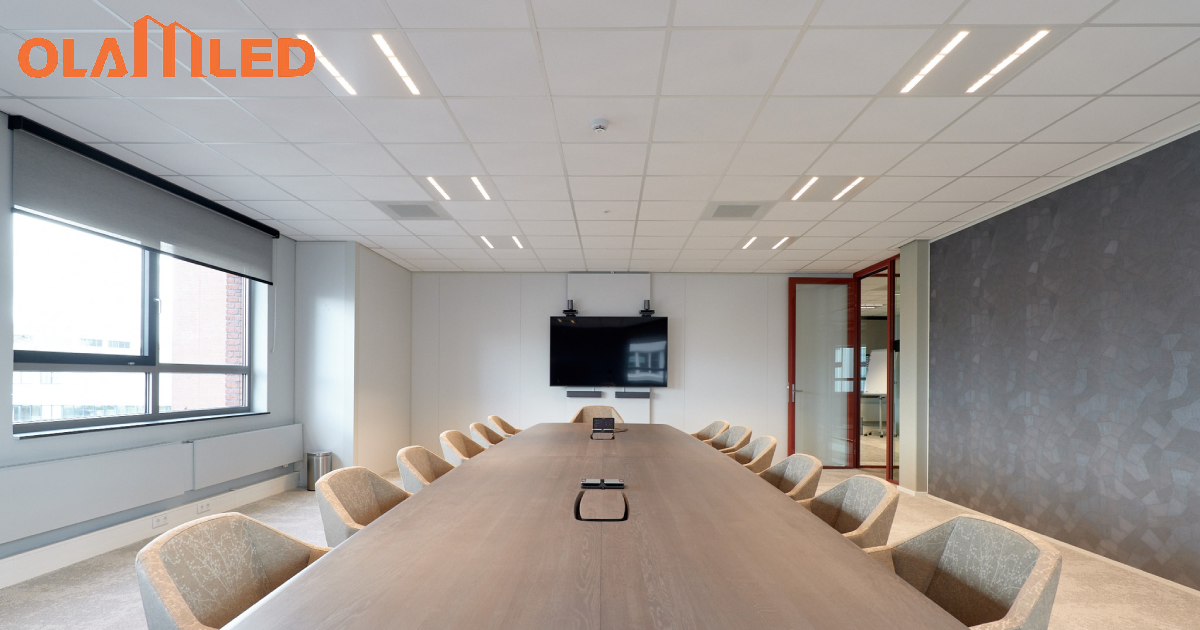Introduction
Lighting, a fundamental component of our quotidian life, is known to exert significant influence on our mood, productivity, and overall well-being across a diverse range of spaces, including, but not limited to, households, workstations, and public areas. Among the pivotal aspects that gauge the quality of lighting, one of the most critical ones is color temperature, an attribute that encapsulates the spectral characteristics of light emitted by a light source and is quantified in Kelvin (K).
Comprehending the concept of color temperature, therefore, is of paramount importance in the context of choosing the optimal lighting for a given environment or activity. For instance, the color temperature of a light source may deeply impact how colors are perceived, the ambiance of a given space, and the efficacy of performing tasks, among other aspects. Erroneously selecting a color temperature may result in adverse consequences, including ocular discomfort, headaches, and reduced visibility.
Ergo, it becomes quintessential to carefully select the right color temperature, customized to diverse applications, and the present article aims to serve as a comprehensive guide, delving into the intricacies of color temperature, its implications in lighting design, and how to discern the appropriate color temperature for varied settings. By the culmination of this article, the readers will be endowed with an enriched understanding of color temperature and its salient impact on lighting quality, as well as practical insights and recommendations to make informed decisions while choosing lighting options tailored to their specific requirements.

What Is Color Temperature?
The technical jargon of “color temperature” (CT) is a term used to delineate the hue of a given light source, measured in Kelvin (K). This unit of measurement describes the spectral character of the light that is emitted when a source is heated to a specific temperature. As such, the color temperature scale spans a broad spectrum from warm to cool hues, with the former characterized by lower Kelvin values and the latter characterized by higher Kelvin values.
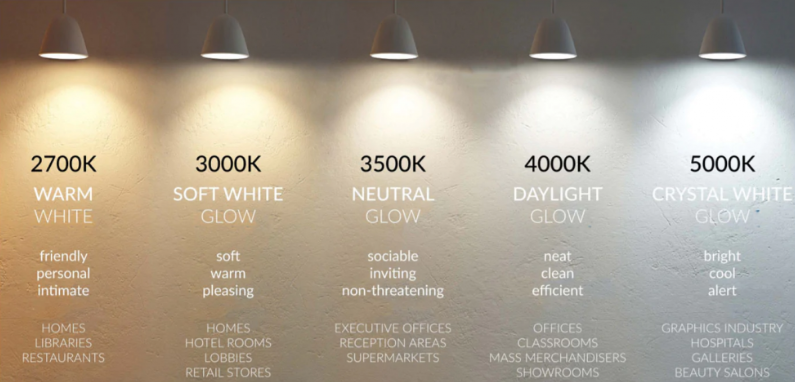
At the heart of the scale used to measure color temperature lies the temperature at which an idealized “black body” emits light. A black body, an object that completely absorbs all radiation incident upon it, emits light at a particular temperature, and the color of the light is intrinsically dependent upon the temperature. The color temperature scale, therefore, is a direct manifestation of this phenomenon.
A veritable Swiss Army Knife of lighting design, the color temperature chart is an indispensable tool that facilitates an understanding of the range of hues associated with different Kelvin values. Warm colors, such as orange and yellow, typically have lower Kelvin values that range from 2000K to 3000K and are often leveraged to create a cozy and intimate ambiance. On the other hand, cool colors, such as blue and white, possess higher Kelvin values that range from 5000K to 6500K and are often utilized to foster a bright and energetic ambiance.
The color temperature of a light source, when applied to lighting design, is an element that can exert a significant impact on the mood and functionality of a space. For instance, warm colors are frequently implemented in residential settings to craft a comfortable and relaxing atmosphere, while cool colors are commonly used in commercial and industrial settings to enhance visibility and augment productivity.
Summing up, color temperature is a highly technical term utilized to depict the hue of a given light source, measured in Kelvin. The color temperature scale spans a spectrum from warm to cool hues, with warm colors characterized by lower Kelvin values and cool colors typified by higher Kelvin values. The color temperature chart is an indispensable tool in making informed lighting choices for a diverse range of settings.
Choosing the Right Color Temperature Bulb!
When it comes to crafting a space that emanates the perfect vibe, there’s no denying that the color temperature of the light source reigns supreme. And with LED bulbs currently dominating the market, it’s essential to delve deeply into the minutiae of their color temperatures in order to make an astute decision. In this article, we’ll explore the subtleties that differentiate low, medium, and high LED color temperature bulbs, furnishing you with the knowledge you require to select the optimal option for your inimitable needs.
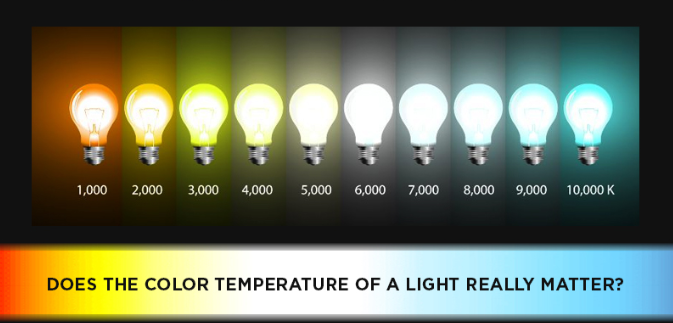
Low LED color temperature bulbs discharge a warm hue that spans from 2000K to 3000K, rendering a cozy and intimate atmosphere. These bulbs are the ideal match for snug residential spaces like bedrooms, living rooms, and dining rooms, as well as for watering holes, restaurants, and other convivial environments that crave a hospitable and homely ambiance.
Medium LED color temperature bulbs emit a neutral hue that resides in the range of 3500K to 4500K, imparting versatility and flexibility that make them well-suited for a broad array of settings. Whether you’re lighting up a home, office, or retail space, these bulbs strike an optimal balance between warm and cool hues, fostering a comfortable and inviting environment.
High LED color temperature bulbs generate a cool hue, ranging from 5000K to 6500K, rendering them perfect for spaces that demand precision and visibility. Kitchens, bathrooms, and workspaces are prime locations for these bulbs, as they provide a bracing light that elevates focus and productivity.
To select the appropriate color temperature bulb, it’s essential to thoughtfully contemplate the space’s purpose and the activities that will be transpiring within it. For instance, a warm color temperature may be ideal for a snug and relaxing bedroom, whereas a cool color temperature may be more suitable for a high-octane workspace.
It’s worth mentioning that the color temperature of your monitor can exert an influence on how lighting is perceived in a room. For those who spend protracted periods of time working on a computer, it’s advisable to conduct a monitor light color temperature review to ensure that you pick the right lighting that can curtail eye strain and fatigue.
To conclude, selecting the proper color temperature bulb is imperative in producing the perfect atmosphere in any space. Low LED color temperature bulbs engender a warm and inviting environment, medium LED color temperature bulbs bestow a harmonious blend of warm and cool hues, and high LED color temperature bulbs enhance visibility and concentration. By considering the space’s purpose and the activities that will transpire within it, you’ll be able to make an informed decision on the best color temperature bulb to suit your singular needs.
What Color Temperature Do I Choose?
The process of selecting the correct color temperature for your lighting setup is challenging and perplexing, and it could leave you feeling uncertain and confused fast. So don’t worry—we are here to guide you through the procedure’s confusing intricacy and maze-like nuances.
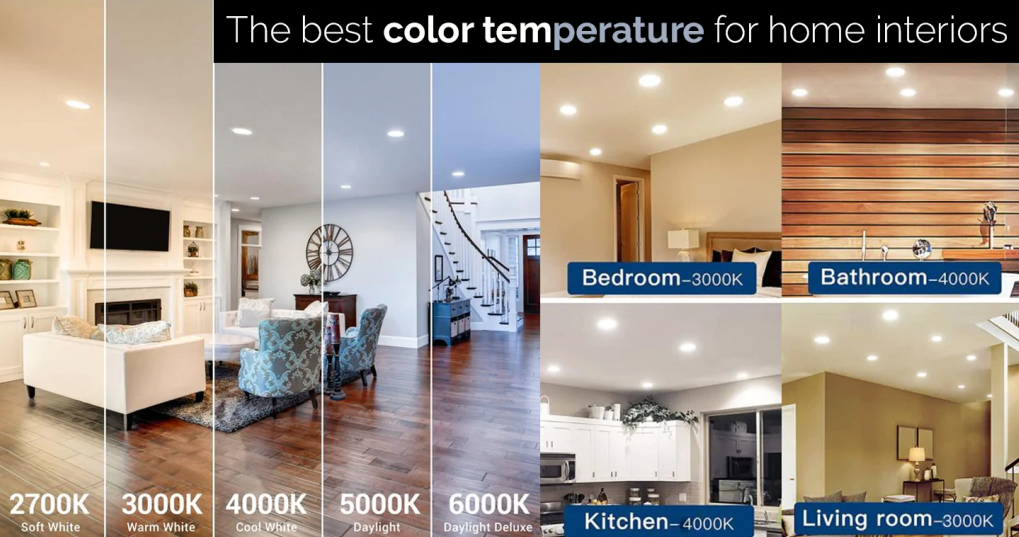
The primary consideration should be the space’s intended use. The ambience you’re aiming to create might be made or broken by this crucial element. Will you visit the location for work or play? The preference for warm or cool colors will depend on this distinction.Warm hues, for instance, are frequently used in rooms like living rooms or bedrooms that call for a calm and cozy ambiance. Cool hues, on the other hand, are more suitable for workstations where sight and clarity are crucial.
But it is only the very beginning. Personal preference is still another important consideration. It’s important to pick a color temperature that you find both visually appealing and operationally beneficial.
The time of day is yet another vital consideration. You could like chilly tones that encourage alertness and productivity in the morning. Warmer tones that promote calmness and relaxation may be more suited as the day wears on and night falls, though.
Request A Quote for Your Lighting Projects!
Are you having trouble deciding which LEDlighting options are best for your industrial or commercial project? If so, turn to OlamLED, the indisputable market leader in unrivalled LED panel lighting solutions. OlamLED boasts an extensive array of top-quality products, from bulbs to fixtures and accessories, which will empower you to create an energy-efficient and cost-effective lighting system that meets your unique needs.

You may be wondering why OlamLED is a better option than other LED panel lighting manufacturers. To begin with, their goods are of the greatest caliber and are covered by a warranty. However, that’s not all – OlamLED is renowned for its exceptional customer service. You’ll have an entire team of experts at your disposal to answer any questions you may have and lead you through the entire process. And let’s not overlook their dedication to sustainability.
With their extensive product range, exceptional customer service, and steadfast commitment to sustainability, OlamLED is unquestionably the prime choice for all your lighting requirements.
You May Also Find These Topics Interesting
Feeling frustrated with your subpar lighting situation? Sure, color temperature is an essential piece of the puzzle, but don’t forget about the smorgasbord of other lighting concepts at play. From color rendering index (CRI) to lumens, and a whole slew of other factors, getting familiar with these topics can be the key to achieving an upgrade in your lighting game and creating a space that’s both functional and aesthetically pleasing.
Let’s delve into CRI, shall we? This metric measures how accurately a light source can display colors in comparison to natural light, making it a game-changer for environments where color accuracy is mission-critical, like art galleries. And don’t forget about lumens, which assesses the brightness of a light source. Knowing the level of brightness, you require will help you choose the right bulb or fixture for your space.
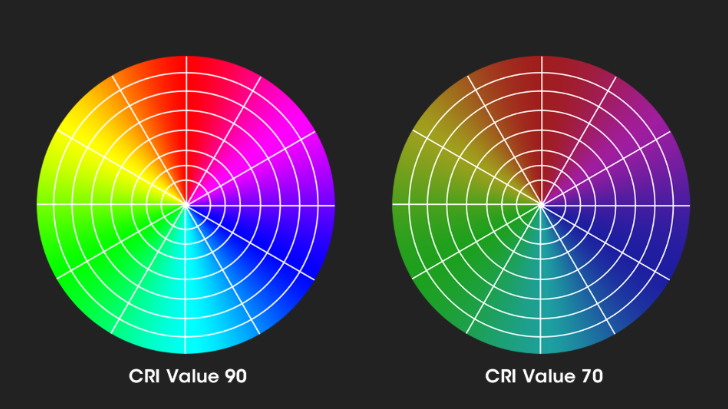
But hold on, there’s still more to explore! You’ll also want to familiarize yourself with the diverse types of lighting fixtures out there, such as recessed lighting or track lighting, and learn how to position and angle them effectively to achieve the ideal lighting results. It may seem overwhelming at first, but trust us, the payoff is worth the effort. By mastering these concepts, you can create a space that’s not only comfortable but efficient too. Plus, you can rest easy knowing that your lighting solutions are both eco-friendly and budget friendly.
To wrap it up, while color temperature is a significant factor, it’s just one piece of the puzzle. By diving deep into CRI, lumens, and the cornucopia of lighting fixtures available, you can gain a deeper appreciation for how different lighting solutions impact the ambiance of a space. With this newfound knowledge, you’ll be able to make informed decisions and achieve your perfect environment.
Conclusion
Choosing the appropriate color temperature for your lighting requirements is essential if you want to design a workstation that is both cozy and effective. In this post, we covered the many LED bulb alternatives, the scientific underpinnings of color temperature, and factors to take into account when choosing the ideal color temperature for your room.
While selecting the proper color temperature, it’s crucial to keep things like room size, personal tastes, and the time of day in mind. You may design a room that is comfortable, favorable to working, and appealing by choosing the right color temperature.
We also presented OlamLED as a preeminent supplier of top-notch LED lighting systems. OlamLED is the ideal option for all your lighting needs because to its extensive product selection and first-rate customer support. We recommend getting an estimate from OlamLED if you’re planning a lighting project to see how they can assist you in designing the ideal lighting solution for your area.
